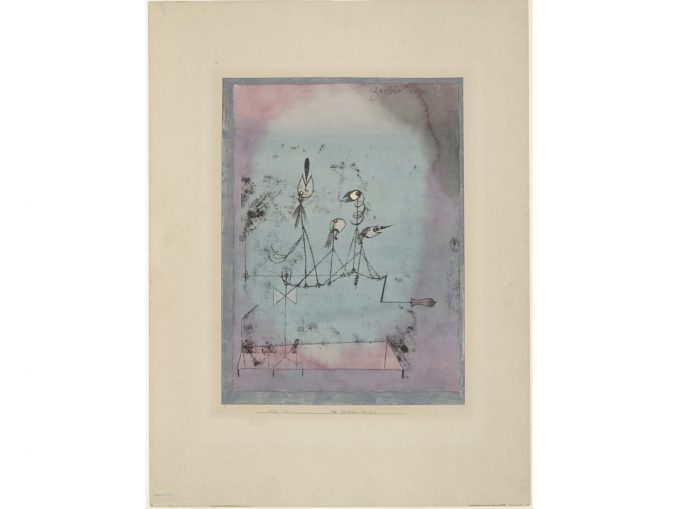
The inspiration for our name comes from Paul Klee. His work, Twittering Machine (Die Zwitscher-Maschine), from 1929 captivated me the first time I saw it at the Museum of Modern Art as a child. And it continues to do so.
Some years back, I wrote about Twittering Machine for then print-publication Inner Audio which has since gone online. Here’s an excerpt from I Walk The Line: Reflections on Paul Klee’s Twittering Machine:
I’d imagine an Ornithologist would view Klee’s machine differently than the small game hunter. The art critic, the World War buff, the watchmaker and the fly fisherman will all bring different experiences to bear on the perceived story that exists between the viewer and the work of art. Which is as it should be isn’t it? After all, there’s no way to insulate a work of art from as many interpretations as pairs of eyes that fall on it. That said the more points of relevance our frame of reference brings to bear on the subject, in this case a drawing titled Twittering Machine produced in 1922 Germany by the Bauhaus professor, artist, author and musician Paul Klee, the more stable our foundation becomes to build our thoughts upon.
The enjoyment of music and hifi is very much the same—what we bring to the experience helps shape that experience which is why, in hifi as in many other things, there is no best for all. There is simply a best for each.

Klee’s machine, in our context, can be viewed as the machines we use for listening or perhaps we are the birds laying in wait for the unattainable perfect reproduction of music.
Klee’s lifelong passion for music and respect for nature add another important dimension to our picture. Klee’s father was a music teacher, his mother a singer and young Paul exhibited great skill on violin. Attending concerts was an important aspect of Klee’s entire life and he would earn his living playing violin until age 30. His wife, Lily Stumpf was a pianist and together they would play Bach and Mozart sonatas at home for their son Felix. Klee was constantly searching for ways to merge his art and love of music. He saw rhythm in color. He titled compositions ‘Fugue in Red’, ‘In Bach’s Style’, ‘Pastoral (Rhythms)’, ‘Nocturne for Horn’, and ‘Ancient Sound’. Of equal importance is his reverence for nature which is evident in his writings. From his Paths of Nature, 1923 “For the artist communication with nature remains the most essential condition. The artist is human; himself nature; part of nature within natural space.”
This is as good an explanation as I can think of for the reasoning behind the Art&Culture section of Twittering Machines. Our passions inform and influence each other in turn helping to shape our lives as well as our view of the world.
Twittering Machine has not changed over the decades since I first saw it. I have. And with the luxury of time, reflection and research, Twittering Machine has grown to be more than a chuckle, even more than a giggle. I’ve accepted Paul Klee’s invitation “Art does not reproduce the visible but makes visible” and allowed my mind to wander from what I thought I knew to things I’m only beginning to understand. I’ve allowed my present to inform and in return be informed by this moment from the past. And for that, I’m thankful for Paul Klee and his walking line. And because of that perpetual unknowing I can laugh heartily, out loud, while turning that internal crank like an organ grinder dreaming of opera.
Twittering Machines, like Klee’s work, speaks for itself. If you find yourself interested, amused, and/or informed by what we have to say, our work has succeeded.

